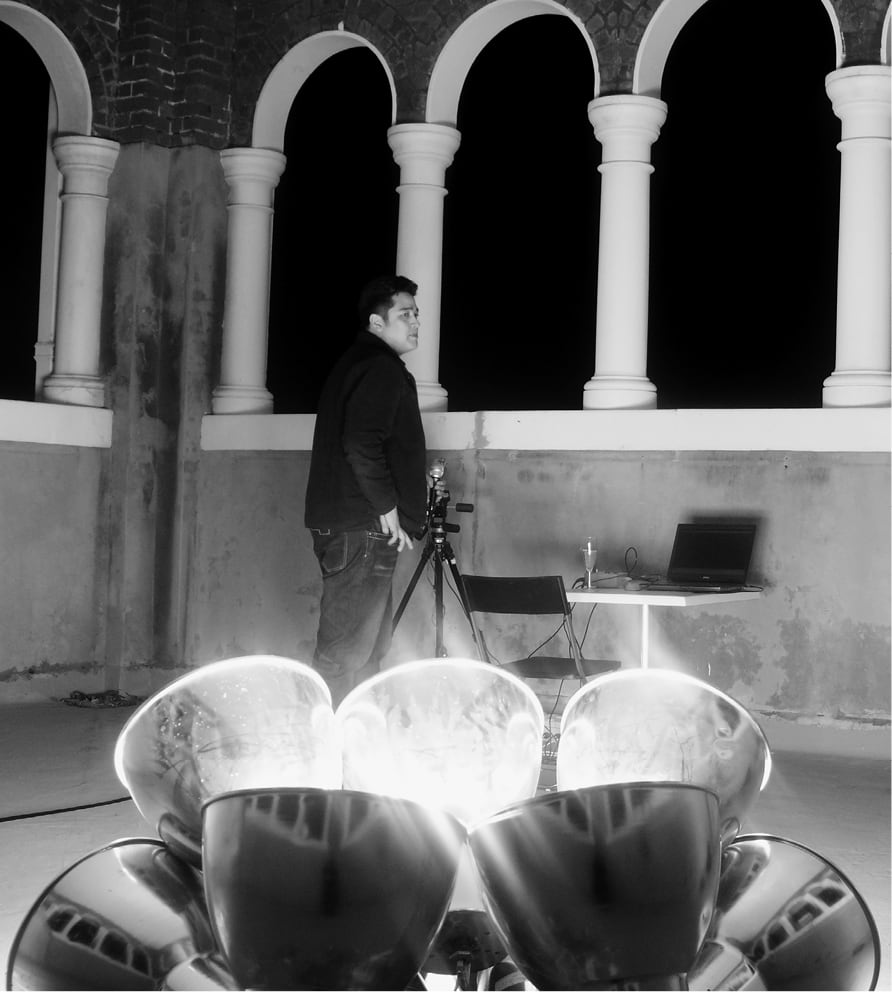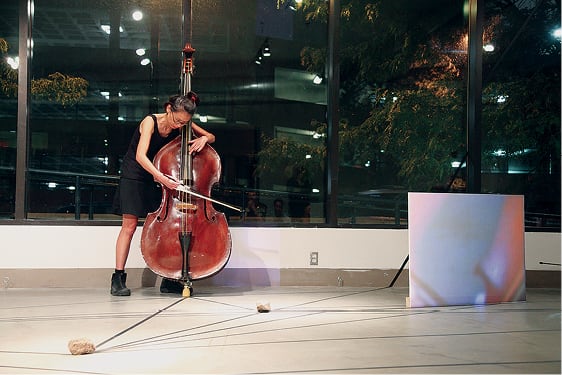
Here you are, standing on the edge of the precipice, feeling your blood thump against the abyss. Look at you, contemplating that awesome and terrible vastness. Friedrich would be proud. You stand here and you think: what could I say to you, Universe? Monkey! Monument! Heartbeat! Sunset! Who is receiving these vibrations, anyway? Which bit matters most: the hearing or the saying?
On 20 August 1977, NASA’s Voyager probes were launched during an auspicious planetary alignment. The probes have two functions: firstly, they are the furthermost man-made objects from home, which collect data from Jupiter, Saturn and the outer planets, and secondly, they act as time capsules. Golden Records of nature and human nature are sealed into their twin skins in case of interstellar interception. Amongst the data on the probes’ Golden Records is a simple message translated into fifty-five different languages and dialects: ‘Hello. Here we are’.1
Almost ten years prior to the Voyager launches, Arthur C Clarke and Stanley Kubrick sent a fictional spacecraft on a similar trajectory; Kubrick and Clarke’s manned Discovery chased radio waves emitted by a now-famous monolith to the moons of Jupiter. The collaborators’ screenplay became two different products: Kubrick’s classic film (which does not explain the origin or purpose of the influential monolith) and Clarke’s ‘novelisation’ (which does in great detail). The book and film versions of 2001: A Space Odyssey were developed simultaneously, with Clarke often editing his manuscript after viewing rushes of the film. Now, intertwined with these ready-knitted narratives is the historical reality of space exploration: when Voyager I sent the first photographs of Jupiter’s moon, Iapetus — the final destination of 2001’s fictional Discovery — Carl Sagan, curator of the Golden Records, faxed Clarke one of the prints. It showed a large, white oval with a black dot in its centre, exactly as Clarke had the astronauts of 2001 discover in 1968. ‘Thinking of you’, Sagan wrote beneath it.2
On 19 July 2010, Jane Wang threaded two cellos with golden strings. Her brother was an astrophysicist and she had translated some of his diagrams into small symphonies; gold seemed an appropriate medium on which to play the music of the spheres. Jason Hendrik Hansma flew from Perth to Boston to meet her with a backpack full of meteorites, some real, some cast in bronze and gold to match. He referred to them as ‘the ambassadors’. The meteorites were arranged on the floor of Mobius (a Boston Artist-Run Initiative, coincidently established in the same year as the Voyager launch) and connected with intersecting lines drawn with tape. Wang placed her cello at one of these intersections and began the recital. A video feed captured the resonance of her strings as she played the planetary symphonies to two audiences of varying sentience.

Later, a Muzak version of The Sound of Silence played as Hansma sat in a Vietnamese restaurant breaking fresh mint into his Pho Tái. He said:
There’s a reason why it’s an artwork and not a story. I’m not sure what else to tell you … there was a goal, but no single defined outcome. It’s a one-off: When It All Comes Into Sight won’t be repeated. ‘Space’ itself isn’t important, but resonance is. I’m not trying to reconcile my ego with the infinite. It was really a platform for speculation — where or what is the audience for an artwork? How can language make the world?3
On 10 August 2010, Steven Morgana decided not to be there when the message was transmitted. Instead, he stood outside with the rest of the spectators staring up at the Perth Institute of Contemporary Art’s clock tower, waiting for some inkling of the transmission to flash against the sky. Neon helium lasers are invisible. Morgana was pleased the audience stuck around for a while anyway.
To realise All Your Hopes and Dreams Vibrating at the Speed of Light, Morgana had advertised on the Internet to find someone with a message ‘beautiful, deep and significant, something worthy of becoming eternal’.4 The winning applicant was chosen at random. In the clock tower, Glen Lawson, a physicist, had rigged a microphone to a laptop computer and a laser that was aimed at some place between the stars. On its way to becoming ‘eternal’ the message was translated from thought, to diction, to electricity, to electromagnetic energy. It is out there right now, as immaterial and mercurial as the thought itself.
Later, impulses in Morgana’s brain were translated into an email. He typed the following passage:
The sculpture acts as monument to a definite event in time, whilst also operating as a counterintuitive monument by -assuming no space and existing beyond time, in a state uniting the finite and durational with the infinite and eternal. This then connects with the perennial notions of immortality — the individual must choose what they say carefully, for a piece of their subjectivity will exist as a feature of the Universe. This burdensome responsibility then connects up with the notion that what we say has futural [sic] implications that we are seldom aware of.5
Arthur C Clarke went on to write three more books on the subject of monoliths, mapping out the next stage of human evolution into the year 3001 and into pure light and sound. Kubrick did not make another science fiction film. Although Clarke’s books are didactic and meticulous in detail, it is Kubrick’s primacy of music over exposition that continues to resonate. There’s room within that famous jump-cut to flesh-out one thousand theories; real life astronauts frequently goof off to strains of Strauss’ Zarathustra and the Blue Danube.
And all the while, Voyager I and Voyager II file their daily reports without incident, recording ‘the ceaseless crackle and hiss of what Pascal, in a far simpler age, had naively called the “silence of infinite space”’.6
*Still, at the edge of the world you stand, shouting Hello, Universe! Your voice bounces back to you like a happy dog with a stick, activating a thought both silly and serious: Where are you, Universe?
Think about distance. Think about twenty-two billion kilometres. Maybe sending your waves out there is like trying to warm the ocean by pissing in it: futile, and not particularly redemptive. But think about this: maybe the Universe starts right in front of you. Maybe it is inside you too — behind your teeth, shaking your larynx. What if the sounds made by your mouth, or the things changed by your hands, weren’t just communication or definition; what if they weren’t just messages?
What if they could somehow make reality happen?*
Gemma Weston is a freelance writer and artist based in Perth.
